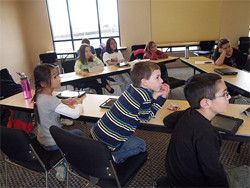
Tried and tested, and proving incredibly successful, these simple ways of integrating iPads into a lesson helps to keep pupils focused, organised, and engaged with their learning. These tips could be used in any lesson with any year group, but I will share examples of contemporary best practice from my role as Upper Key Stage 2 teacher and ICT Coordinator. A teacher does not even need a whole class set of iPads to be able to replicate these methods; one, six, or eight devices will also work well.
A great way of controlling both the physical storing, charging and distribution of a set of mobile devices, and also to assist the smooth running of iPad lessons, is by allocating the role of ‘Digital Leader’ to a small group of pupils within your class. Digital Leaders are students who are enthusiastic about technology and are able to share examples of best practice and model correct behaviour to their peers, supporting teachers and increasing the potential of ICT in the school. They can be trained to conduct a wide variety of weekly jobs, such as deleting photographs on the iPad camera roll, and can support other pupils and teachers when needed, perhaps when using a new website or App, or updating the class wiki or blog.

Exam boards cite many benefits to exams becoming computer-based rather than using the traditional pen-and-paper.
Results can be computed almost immediately and with total consistency, and there are major cost savings on marking and general logistics to be enjoyed.
The question is, do students have the keyboard skills to cope with computer-based assessments? It would be a scandal if children were to fail, not on their lack of knowledge, but because they could not type their answers quickly enough.

‘Reading pictures can be as easy or difficult as reading printed text.’ Gomez-Reino, 1996
My research into how to teach young children explicit inference skills began in 2001 when I observed that there was a discrepancy in my school between many of our fluent reader's ability to read and their overall comprehension.
Evidence worryingly showed that an emphasis placed on phonics was producing readers who could decode the words but often had no understanding of their meaning. This was later reflected in the Rose Review’s ‘Simple View of Reading’ (2006) and more recently substantiated by York University’s ESRC reading study (2008) that raised the concern that ‘pupils' ease at reading words out loud may mask those who have difficulties with comprehension’. The cause of the problem was highlighted further by Anne Kispal’s ‘Effective Teaching of Inference’ NFER report in 2008 which concluded that poor inferencing skills cause poor comprehension and not vice versa’.
We realised that there was clearly a need to teach our children how to consciously infer and apply comprehension strategies as early as possible, if we wanted them to read for meaning and enjoyment from the very beginning.
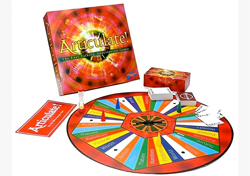
Like most people, I absolutely love a good board game. Many a Christmas has been spent playing, enjoying and reveling in entertaining games with close friends and family. They never seem to disappoint, they always bring the family together, and are great for improving team work and collaboration skills.
This has made me think about how could they be integrated into the classroom.
The three board games that I am going to talk about all have fantastic potential in the classroom. Although they are aimed at adults, the rules for the games can be easily adapted by teachers to fit in with most curriculum areas.

It's hard to run an inquiry-based classroom. Don't go into this teaching style thinking all you do is ask questions and observe answers. You have to listen with all of your senses, pause and respond to what you heard (not what you wanted to hear), keep your eye on the big ideas as you facilitate learning, value everyone's contribution, be aware of the energy of the class and step in when needed, step aside when required. You aren't a teacher, rather a guide. You and the class find your way from question to knowledge together. Because everyone learns differently.
You don't use a textbook. Sure, it's a map, showing you how to get from here to there, but that's the problem. It dictates how to get 'there'. For an inquiry-based classroom, you may know where you're going, but not quite how you'll get there and that's a good thing. You are no longer your mother's teacher who stood in front of rows of students and pointed to the blackboard. You operate well outside your teaching comfort zone as you try out the flipped classroom and the gamification of education and are thrilled with the results.

I was wondering how useful your schools' marking policy was to you as a teacher and, of course, to your pupils.
Marking policies are there to help teachers have a common framework by which they can regularly assess their pupils; this is useful enough and many have a timeframe attached. For example, they may state that marking must be carried out every three weeks.
Clearly, the idea is that pupils need regular feedback on their written work and this is often interpreted by time-pressured teachers who quickly tick through notes and add depth to one 'substantial' piece of writing. This is an example of an asynchronous process and, in my opinion, it is not particularly helpful for pupils or teachers!
The depth of the feedback offered can be as detailed as anyone may ask: literacy/numeracy comments, next steps, grades or levels, literacy/numeracy levels and feedback by pupils. The best assessment, however, is not driven by imposed windows of time.
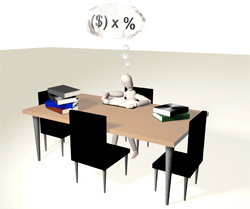
This is always challenging, isn't it? Finding evidence that students have learned what you taught, that they can apply their knowledge to complex problems.
How do you do this? Rubrics? Group projects? Posters? None sound worthy of the Common Core educational environ - and too often, students have figured out how to deliver within these guidelines while on auto-pilot.
Where can we find authentic assessments that are measurable yet student-centered, promote risk-taking by student and teacher alike, inquiry-driven and encourage students to take responsibility for his/her own learning? How do we assess a lesson plan in a manner that insures students have learned what they need to apply to life, to new circumstances they will face when they don't have a teacher at their elbow to nudge them in the right direction?
Here are some of my favourite approaches:
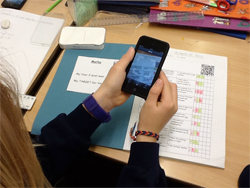
Since the beginning of September, we have been trying to maximise the use of 1:1 iPods in year 6 in all areas of the curriculum. The potential of enhancing teaching and learning in mathematics through the use of this technology has been particularly interesting. We have been developing the creative use of a range of apps to support progress, engage childrena and add relevance to maths teaching with positive outcomes. We have also explored a wide range of maths specific apps which have helped pupils mainly in the areas of number fact and tables recall. Recently, we have extended the use of the iPods to allow them to support independent learning, and play a central role in effective formative assessment.
Each week the children complete regular short assessment tasks based on assessment criteria appropriate to the level of maths they are working towards. We have adapted the assessment resources provided by Andrell Education as part of the Big Maths approach developed by Ben Harding. For those unfamiliar with Big Maths, the assessment feature uses a 10-step checklist to identify the specific steps a pupil needs to secure before achieving a level and moving on to the next. As teachers, we have found this element of Big Maths extremely powerful and it is central to our developments with the iPods in terms of formative assessment and independent learning.
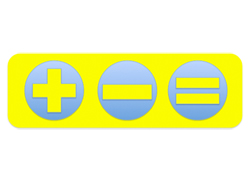
It is great to know that peer assessment can be a time saving, effective form of feed forward. However, we cannot expect our pupils to complete all of our marking… can we? Teachers hate marking books! I have never met a teacher that said: “I have a lovely big pile of books waiting to be marked on my desk; I can’t wait to get started!” Marking takes time that teachers just do not have.
Assessment of any type is completed to provide pupils with a way of moving forward with their learning. It should not be completed in one large batch just before a work trawl. The marking method that follows was developed as a result of me wanting to mark every piece of work that pupils complete but simply not having the time. I took an existing idea named plus, minus equals and developed my own method of delivery that helps me save time while still effectively assessing pupils’ work.
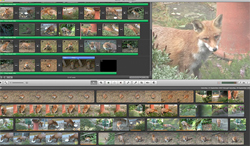
Asking pupils to create presentations to demonstrate their learning has long been a common tool for assessment. In today’s classroom learners have access to a range of tools that allow them to create effective presentations, and these can often be a great way of letting those pupils who struggle to write their ideas down on paper communicate what they know.
There are many voice recording tools around. Simple gadgets like Talking Tins, Talking Postcards or the Easi-Speak microphone are great for young children to record short segments of information. With these simple pieces of hardware, children can easily listen back to their recordings, enabling them to practice and perfect their speaking skills as well as the content of what they are saying.

A community-driven platform for showcasing the latest innovations and voices in schools
Pioneer House
North Road
Ellesmere Port
CH65 1AD
United Kingdom